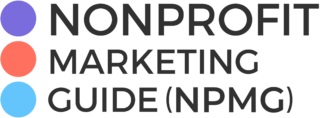Storytelling is all the rage in the marketing world these days, because it works. Examples are everywhere in commercial advertising. Samuel Adams commercials feature real employees and customers talking about beer. Those Geico commercials (not the ones with the gecko or the cavemen) feature customers and celebrities telling real stories. The UPS ad executive at the white board is telling real stories.
“Stories” is the sixth pillar of effectively communicating your ideas, according to “Made to Stick” — which is, by the way, a fabulous book that every nonprofit communicator should own. (I may be the last blogger on the planet who got a review copy to actually mention the book, but that’s because I wanted to wait a few months after reading it to see if, well, it would stick with me. It did. You should buy it.)
Recent research into what works in fundraising appeals shows that a powerful story about a single individual moves donors more than general information or even stories about more than one person.
So how can you inject storytelling into your day-to-day communications? Here are ten specific examples of ways nonprofits can use stories.
1) Include a story about a real person in every speech you give. Talking to potential volunteers? Tell a story or two about a real volunteer and the difference she is making in the lives of others.
2) Turn a story into a how-to article for your newsletter. Using the first person (“How I . . .”), have someone on your staff, a board member, or a volunteer explain how to do something, based on his own experience in learning how to do it.
3) Include testimonials in your event marketing. Ask people who attended your workshop to provide testimonials about how they personally used what they learned at the event in their own work.
4) Single out one person you are helping in your next fundraising appeal letter. Instead of talking broadly about the need for low-cost childcare in your community, talk about the plight of just one single mom.
5) Use serial storytelling on a campaign blog. Hook in readers with frequent updates about a particular person, animal, or item. Environmental and humane groups use this tactic effectively all the time (e.g. tracking a particular whale’s journey — “Will he evade the evil whale hunters?” — or a dog that has been badly abused, but is now on the mend after being rescued — “Will she live? And walk again?”).
6) Give each board member at least one good story to use, and have them practice telling it. Your board members should be advocating for your organization at all times. Give them real stories they can use that will put your organization in a good light with potential donors, volunteers, community decision-makers, etc. Make time on your next board meeting agenda to learn the stories and to practice telling them.
7) Lead your next press release with a story. The media loves real stories, so use them as angles in your press releases. If you can make the real person in the story available for interviews, that’s even better.
8) Incorporate a story into a training session. Who do you train? Volunteers, new staff, community members, others in your field? Incorporate a good story into your next training session.
9) Add stories to your annual report. They can take the form of personal profiles, first-person accounts, or short testimonials, but include stories about real people in your annual report to reinforce the narrative about your accomplishments and activities.
10) Rotate stories on your website home page. Collect stories about specific people related to your organization and rotate them on your home page.
I plan to talk much more about storytelling on this blog. But until I get all those posts written, check out the quick primer on nonprofit storytelling by Nancy at Getting Attention.






